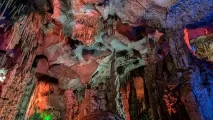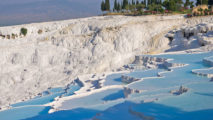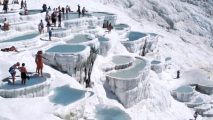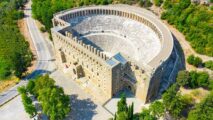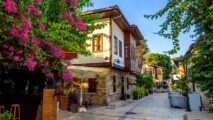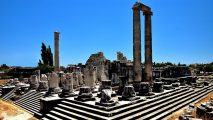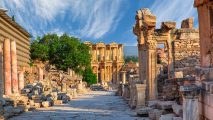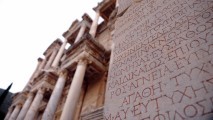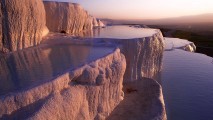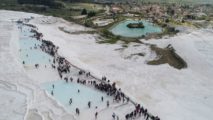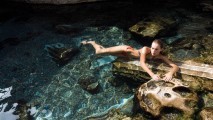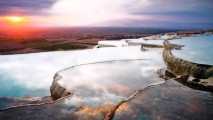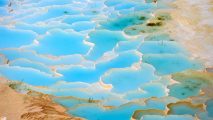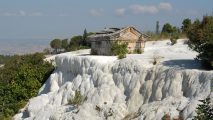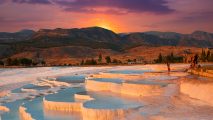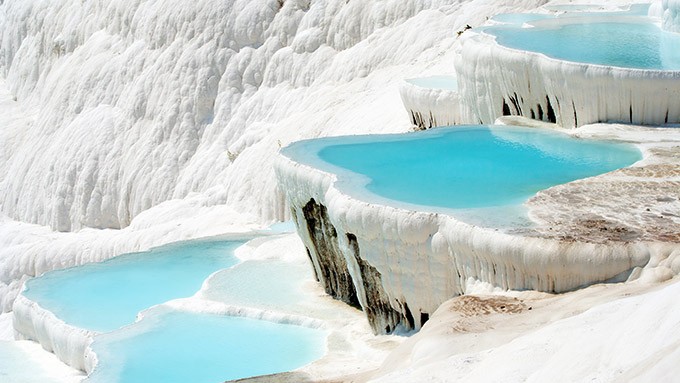
Located 22 km from Denizli’s city center, Pamukkale is a renowned tourist spot celebrated for its natural wonders and historical significance.
While Pamukkale is synonymous with its stunning white calcium terraces and thermal waters, the area offers a plethora of natural attractions and ancient landmarks, including:
- The white terraces of Pamukkale
- The ancient city of Hierapolis
- The Red Spring Water
- The ancient city of Laodicea
- Kaklik Cave
- Honaz Waterfall
The modern town of Pamukkale has evolved into a vibrant tourist hub, offering a wide range of accommodations, from hostels to luxury five-star hotels. The town is bustling with restaurants, shops, a bakery, an elementary school, ATMs, bus services, travel agencies, and souvenir shops selling everything from textiles to gems. A visit to the local market on Wednesdays is a must for fresh fruits and vegetables.
Pamukkale: A UNESCO World Heritage site, Pamukkale, meaning “cotton castle” in Turkish, is famous for its terraces formed by limestone-laden thermal waters, creating a breathtaking natural wonder. The area boasts 17 hot springs with temperatures ranging from 35°C to 100°C. Legend has it that a young girl transformed into a beautiful woman after falling into one of the natural pools, leading to the area’s popularity as a healing and spa center. Hierapolis, an ancient city, was built atop these terraces.
Hierapolis: Hierapolis, or “the sacred city,” was established as a thermal spa center in the 2nd century BC by Eumenes II of Pergamon. The city, located above Pamukkale’s hot springs, thrived as a Roman city and later as a healing center where doctors utilized the thermal waters for treatment. Notable for its textiles and purple dye, Hierapolis also housed famous philosophers like Epictetus and Antipater. The city’s significant Jewish population contributed to its diverse cultural tapestry.
Hierapolis’s ruins include a vast necropolis with graves dating back to the Hellenistic period, Roman baths now housing the Hierapolis Museum, the Temple of Apollo, the Plutonium dedicated to the god of the underworld, a well-preserved Roman Theatre, and the Antique Pool, known for its healing properties. The St. Philip Martyrium, believed to be the burial site of Saint Philip, is another key site.
Surrounding Attractions: Karahayit, known for its red, green, and brown thermal waters, offers spa treatments with healing properties. Kaklik Cave, resembling an underground version of Pamukkale, and Laodicea, an ancient city significant to the Seven Churches of Revelation, are must-visit locations. Aphrodisias, dedicated to the goddess Aphrodite, stands out as one of Turkey’s best-preserved ancient sites.

